Top 4 Dreamcast Games that Next-Gen Developers Should Reboot
When it debuted in 1998, the Dreamcast was the first console to have many of the features that are now expected of next-gen consoles. It offered outstanding graphics and advanced AI for the time, along with some of the sprawling non-linear worlds within a game that are now simply standard. Despite all of this, the Dreamcast is often a source of disdain as much as it is reverence. Many disliked the clunky controller and memory card system, and were holding out for the promise of the PS2. The Dreamcast could not play DVDs, which was a large disadvantage to the PS2 that began the trend for consoles to have multi-use beyond gameplay alone. Sega’s reputation at the time had been marred with failure which allowed the PS2 to steal away gamers who would perhaps have purchased the Sega system after positive reviews.
As such, the Dreamcast has been a largely neglected system, with many newer gamers left unaware of the fantastic features and exclusive titles available. Despite seeming to be largely an arcade classic console, it was a goldmine of genius yet unhyped games. Some of these were available on other platforms, such as the PS1, but did not seem to be appreciated in the same way. Similarly, a few exclusive games have been given a half-hearted reboot, but these were met with a cold to lukewarm reception as the enjoyment provided on the Dreamcast for some reason did not translate. Now that gaming has broken through the mainstream, it would definitely be of worth to revisit some of these forgotten classics and give them the opportunities that they introduced to gaming in the first place.
4. Super Runabout
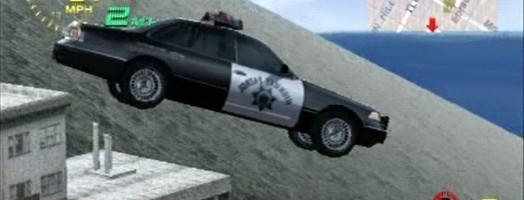
The Runabout series was also available for the PS1 & 2, but was sadly not continued. On the face of it Super Runabout was a fairly average mission-driven game with little plot or motivation and moderately eccentric handling. Underneath this, though, lay a game of pure and mindless destruction.
Super Runabout is similar to Burnout in the sense that the real joy is derived from wreaking havoc upon the roads and wrecking as much as possible for points. In Super Runabout the open world was filled with items, large and small, to break at will. Each time you ran into something, be it another car or simply a postbox, the amount that it would cost to fix it is tallied in the corner of the screen. This was definitely more consuming than the game itself, as the player often found themselves (at least, I did) ignoring the big picture and looking to smash as much of the city as humanly possible within the time limit and without totalling their vehicle.
One of the most engaging parts of modern gaming is the ability to interact with the environment presented to you. Many games at this point had very limited and linear structures in which the plot took place. For example, Metal Gear Solid allowed you to get in a box, and Spyro the Dragon gave the opportunity to headbutt sheep, but that was about it. Super Runabout, though, let the player to interact with totally irrelevant pieces of what would have normally been background furniture which gave it a much more satisfying and immersive experience. Destruction extends that interaction into what everybody really wants to do, in both virtual and real life. Bad day at work? Smash all the windows in an office block. Your ex is engaged? Rip up all the public flowerbeds. Super Runabout may not have been the smartest game, but it knew what the people wanted.
3. Ecco the Dolphin
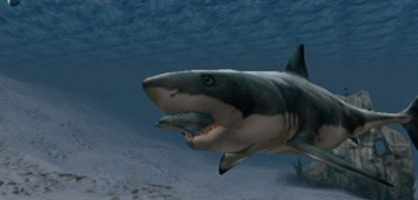
Was there ever a game more beautiful than Ecco the Dolphin? Even on the Mega Drive, the side-scrolled leaping of dolphins across a paltry 256 pixels when one finished a level inspired a child-like enjoyment of aesthetic pleasure. The Dreamcast took this further with a lush 3D world that was unlike anything that had preceded it. The underwater landscape made standard gameplay its own. Instead of thugs you fought off sharks, instead of visiting a hotdog stand for health you darted for fish, taking these familiar actions and putting a truly novel spin on them.
Whilst the Mega Drive incarnation has been made available in arcade modes on the Xbox, a next generation reboot of the full, 3D Ecco the Dolphin experience would be a refreshing relief from hyper-reality and often harrowing themes in modern games. The industry’s technological advances would also be a large addition to the gameplay itself. It lends itself to a movement sensory Wii or Kinect platform as many actions, such as jumping from the water and charging at foes, could be easily made tangible with this control. Many people fret over video game violence and parents allowing young children to play unsuitable games, but Ecco the Dolphin could be an antidote to this. The missions are innocent without being dull and, let’s be honest, everybody loves sharks. With modern graphics capabilities Ecco the Dolphin could be exemplary in unleashing a stunning and immersive game without relying on apocalyptic or street violence.
2. Jet Set/Jet Grind Radio
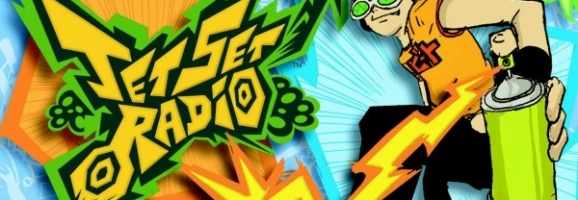
There have been several attempts, including one in the pipeline, to reinvigorate the joyful Jet Set Radio (Jet Grind Radio in North America). It was initially re-released on Xbox, but clearly lacked the care and attention of the Dreamcast incarnation as it suffered from a frustrating camera issues and less mission direction than previously.
This evidently led to its low sales and mainstream indifference. Since then it has been relegated to “Sega Classics”, available as a badly maintained Android app. Sega teased us with promise of a re-release on Xbox 360, but revealed it would be available on Xbox Live Arcade, sitting on the shelf with enjoyable but one-dimensional games such as Bejewelled and Pac-man.
Jet Set Radio’s cel-shading would be a refreshing alternative to modern graphics, and it’s fast and furious gameplay allowing for a very different gaming experience to the current norm. A lot of gamers in the modern sphere are disgruntled by the trend of cinematic gaming. Games aren’t necessarily meant to be choose-your-own-adventure Hollywood flicks, but should represent a different platform for storytelling and entertainment.
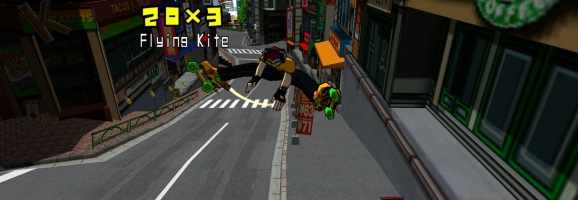
Jet Set Radio is mildly reminiscent of arcade games only in the sense that it allows the player to select from a variety of characters for each level, but apart from that it is a far cry from the linear platform of the majority of arcade games. The Dreamcast edition offered a solid story with over-arching enemies and themes, as well as the option for free-play and separate challenges allowing for an open world as well as a constructed plot. Much like Ecco the Dolphin, part of Jet Set Radio’s charm is the fact that it is so different from other games on the market. In a climate where Tony Hawk’s Pro Skater was the (great, but boring after a while) norm, Jet Set Radio took the skating genre and coloured it with surprisingly political overtones, enhanced aesthetically by the captivating graphic style and the catchiest soundtrack in gaming.
1. Shenmue (1, 2, & 3)
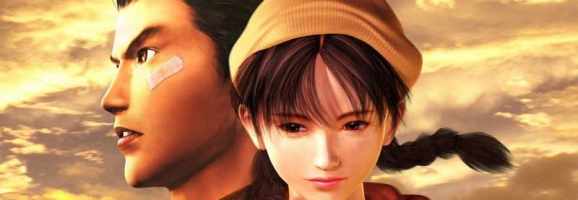
Ah, Shenmue. The game that bred a million RPG fans, it was a game that helped to mould the RPG that we see today. Shenmue was an open-world masterpiece that permitted the player to root around in drawers, buy trinkets, and interact with a wealth of AI characters multiple times without having the same stock line thrown in their face. Not only this, but Shenmue offered a cinematic dream of a story. The player first comes into the game behind Ryo Hazuki, who comes home in the middle of his father’s murder and the robbery of a mysterious artefact from his home.
Shenmue was involving and emotional as a tale of revenge, yet Ryo’s emotional indifference aside from his quest made him a protagonist much like that from Fallout 3 where the player is both involved in the story, but removed enough to put their own thoughts and feelings onto the main character. One of the most pressing arguments for Shenmue to continue is the cliffhanger that fans were left with at the end of Shenmue II. This cliffhanger, avoiding all spoilers, changed the entire atmosphere and reality of the series that the player had experienced so far, and demanded an explanation. Shenmue’s creator, Yu Suzuki, has recently confirmed that he would like to continue with the sequel, so hopefully, one day, this epic tale will close in the light of day.
To the (now resigned) dismay of fans, Shenmue remains unfinished. Shenmue II sold badly when released on Xbox, probably because fans of the game already owned it on the Dreamcast, and so the series was abandoned. The new breed of gamers that the Xbox and consoles of that era brought in didn’t seem to think much of Shenmue, partly due to the necessity of performing repetitive tasks. Ryo has to take a job moving boxes which is time consuming and can be frustrating. With automatic respawning found in Halo, and the then prevalence of memory cards and ad hoc game saves, the reward older gamers felt from doing the same level, or same activity, over and over became a drawback. This can, of course, be improved on for the modern market of gamers with more varied work. Shenmue II also suffered from a lack of marketing, and the fact that it picked up from Shenmue I without giving the new player much context. Both of these problems could be resolved by starting the series again and putting more effort into attracting new fans of the series to pull it out of its current cult status.
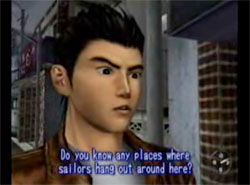
The Dreamcast remains a cult console because it still does seem to elicit a strong reaction either way. Despite its limitations and drawbacks, it was without a doubt one of the most advanced consoles of the time, with some of the most ambitious games of the time. Even though the console itself failed, there is no reason to relegate its most revered games to being just a faulty app or arcade game with no real impact. In the modern age, games mean so much more than mindless entertainment and it would be a travesty for games that were worked so hard on, and meant so much at the time, to be forgotten in the gaming wastes forever.
What do you think? Leave a comment.

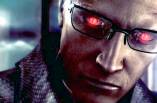


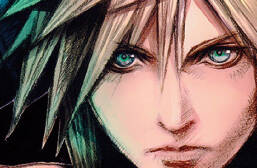
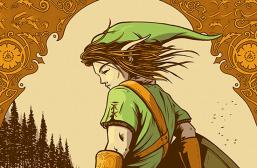
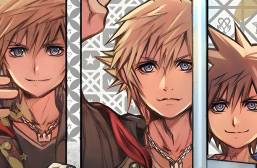
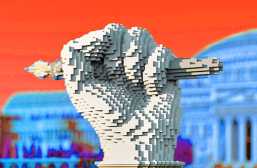
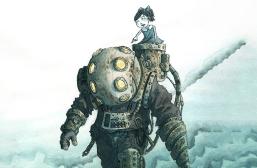


Was wishing: Please let Shenmue be there, Please let Shenmue be there, Please let Shenmue be there… Sega need to wake up.
ChuChu Rocket! Loved that game. If it hasn’t already, it should be remade as a downloadable of some kind. Local multiplayer needs a resurgence of some kind.
Chu Chu Rocket was on my list! I discovered it’s a download on Android, so had to strike it as it was actually really good in that format – I recommend it if you have an Android gadget!
There was a kickstarter for a Ecco the Dolphin game, or by the team, shame that it never was completed: http://www.kickstarter.com/projects/annunziata/the-next-ecco-the-dolphin-adventure-game
Very good choice of games! Agree fully. Shenmue is a clear choice for number one, the story is to be concluded.
I’ve always wanted to play Shenmue but never had the chance too, always regreted that.
Yeah it would be great to see these old franchises brought back to life. If promoted correctly, these games could be incredibly successful. Especially Shenmue.
Great article! These games reach out the masses through sheer thrills. They should be rebooted to fit the stellar graphics and gameplay game developers have created over the past couple of years.
Sonic Adventure rebooted would be great
Sony or some other major major video game company would need to acquire the rights if not possessed already first.